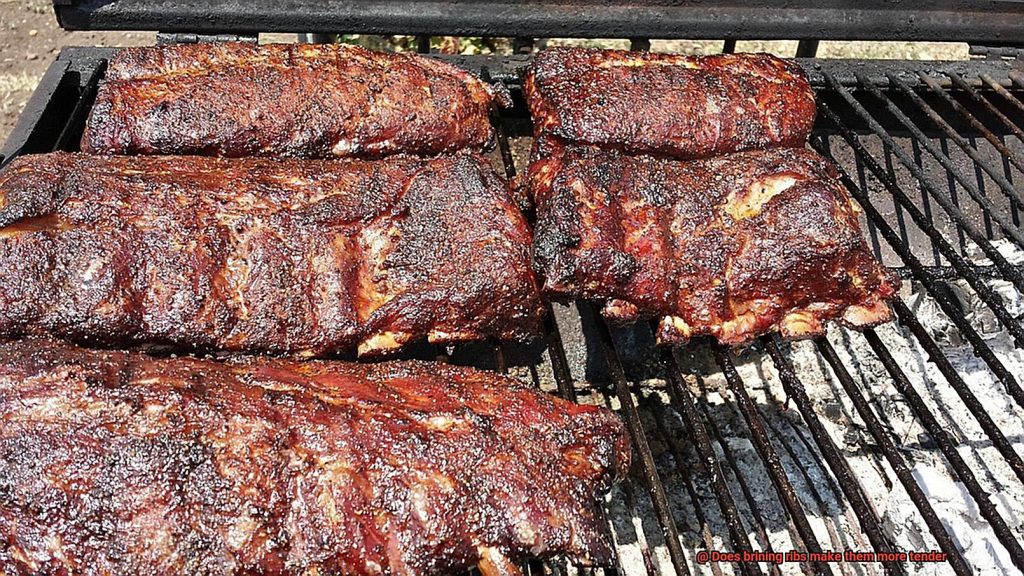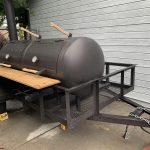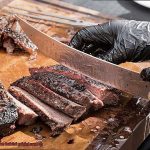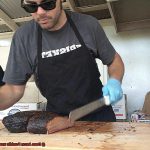Brisket, that succulent slab of beef that makes your taste buds tingle with anticipation, has a reputation for being a tender delight. But here’s the thing – achieving that melt-in-your-mouth tenderness isn’t always as easy as it seems. So, let’s cut to the chase and answer the burning question on every brisket lover’s mind: does brisket get more tender the longer you cook it?
In this article, we’re going on a flavorful adventure through the world of slow-cooked perfection. We’ll uncover the secrets behind unlocking brisket tenderness while tantalizing your senses along the way.
Get ready to dive into this juicy mystery with me.
Contents
What Makes Brisket Tough?
Brisket, a flavorful and sought-after cut of meat, is notorious for its tough texture. However, with the right knowledge and cooking techniques, you can transform this challenging cut into a tender and melt-in-your-mouth delight.
In this article, we will explore the factors that contribute to the toughness of brisket. By understanding collagen, elastin, fat content, cow age, and cooking methods, you’ll be equipped to conquer brisket like a true pitmaster.
Collagen: The Culprit Behind Toughness
Collagen, a connective tissue found in brisket, gives structure and support to cow muscles. High levels of collagen can make the meat tough if not properly broken down during cooking. Low and slow cooking methods like smoking or braising are essential for allowing collagen to convert into gelatin, resulting in tender and juicy meat.
Elastin: Resisting Transformation
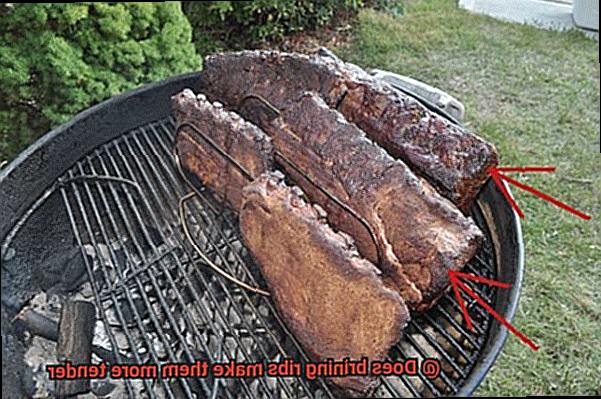
Elastin, another connective tissue in brisket, does not break down easily during cooking. This leads to a chewy texture that nobody wants in their mouth. Younger cows have lower levels of elastin, making their briskets more tender compared to those from older cows.
Fat Content: Striking the Perfect Balance
The amount of fat in brisket greatly impacts its tenderness. Too much fat can leave you with greasy meat, while too little fat can result in dry and tough bites. Selecting a well-marbled brisket ensures a good balance between tenderness and flavor.
Cow Age: A Reflection of Tenderness
As cows age, their connective tissues become more developed, leading to tougher meat. Opting for younger cows or choosing specific grades of beef can help ensure a more tender brisket.
Cooking Methods: Unlocking Tender Delights
The cooking method and temperature play crucial roles in achieving a tender brisket. Low and slow cooking methods, such as smoking or braising, allow ample time for collagen breakdown. This results in a tender texture while infusing the meat with delicious smoky flavors.
How to Cook Brisket for Maximum Tenderness
Heading 1: Choose the Perfect Cut
To embark on a journey towards the most tender brisket, select a whole packer brisket that encompasses both the point and the flat. The point offers a luscious fatty richness, while the flat provides a lean and delectable texture. By opting for a whole packer brisket, you unlock a harmonious symphony of succulent and tender meat.
Heading 2: Trim the Fat with Precision
Before commencing the cooking process, exercise precision by trimming any excess fat from the surface of the brisket. While a thin layer of fat is desirable to keep the meat moist during cooking, an overabundance of fat can transform your masterpiece into a greasy disappointment. Remember, our goal is optimum tenderness, not an unwelcome greasy surprise.
Heading 3: Seasoning Sorcery
Elevate the flavor profile of your brisket by embracing the magic of seasoning. Utilize a dry rub or marinade to elevate your culinary creation. Combine salt, pepper, garlic powder, and paprika for a simple yet tantalizing seasoning blend. For those with an adventurous spirit, explore an array of spices and herbs to tailor your brisket to your taste buds’ desires.
Heading 4: Slow and Steady Wins the Race
The key to achieving unparalleled tenderness lies in adopting the mantra of “low and slow.” Set your grill or smoker to a temperature range of 225°F to 250°F (107°C to 121°C) for an unhurried and deliberate cooking process. Allow your brisket to bask in this gentle heat for approximately 1.5 to 2 hours per pound, as patience holds the key to unlocking tenderness beyond measure.
Heading 5: Indirect Heat is a Tenderhearted Companion
To ensure your brisket emerges from this culinary adventure as moist and tender as can be, embrace the power of indirect heat. Place a drip pan beneath the brisket to capture any succulent drippings, maintaining the perfect moisture levels. This simple step will shield your meat from the perils of drying out, preserving its tenderness and flavor.
Heading 6: The Perfect Finish
After several hours of cooking, when a beautiful bark has formed on your brisket, it is time to consider wrapping it in foil or butcher paper. This artful technique aids in retaining moisture and expedites the cooking process, ultimately culminating in a more tender brisket.
Remember, patience is a virtue when it comes to achieving maximum tenderness. Allow your cooked brisket to rest for at least 30 minutes before embracing your slicing prowess. This period of rest allows the juices to harmoniously distribute within the meat, further enhancing its tenderness and flavor. When slicing, remember to cut against the grain, ensuring each bite unveils a symphony of tenderness.
Low and Slow Cooking Methods for Tender Brisket
Brisket, a tough and flavorful cut of meat, requires special cooking methods to achieve that melt-in-your-mouth tenderness. In this guide, we will walk you through step-by-step low and slow cooking methods that will leave you with perfectly tender brisket every time.
Step 1: Choose the Right Cut and Trim with Precision
Start by selecting a well-marbled brisket from the flat end. Trim excess fat to about ¼ inch thickness, leaving a thin layer to enhance flavor and moisture.
Step 2: Embrace Seasoning Sorcery
Prepare a flavorful dry rub by combining salt, pepper, paprika, garlic powder, onion powder, and other spices you prefer. Generously coat the entire brisket with the dry rub, allowing the flavors to penetrate the meat.
Step 3: Smoke it Slow or Braise it Low
For smoking, preheat your smoker or grill to around 225°F (107°C). Place the brisket on the grate and smoke for 8-12 hours, maintaining a consistent temperature. Use wood chips like hickory or mesquite for added smoky flavor.
For braising, sear the seasoned brisket in a hot pan until browned on all sides. Transfer it to a Dutch oven or slow cooker, add enough liquid (broth or wine) to submerge the meat, and cook at around 300°F (150°C) for several hours until tender.
Step 4: Harness Indirect Heat
Both smoking and braising require indirect heat. Place the meat away from the direct heat source, allowing for gentle and even cooking. This method prevents drying out the meat and encourages tenderization.
Step 5: Patience and a Harmonious Rest Period
Once your brisket reaches the desired tenderness, remove it from the heat source. Let it rest for at least 30 minutes, allowing the juices to redistribute throughout the meat for a moist and flavorful final product.
Tips and Tricks:
- Use wood chips like hickory or mesquite to infuse your brisket with smoky flavor during smoking.
- Invest in a meat thermometer for perfect doneness without overcooking.
- Experiment with different spice combinations and liquid additions to personalize your brisket’s flavor profile.
- Don’t rush the resting period; it’s crucial for ultimate tenderness.
Internal Temperature: The Key to Perfectly Cooked Brisket
Today, we embark on a culinary journey to discover the secrets of cooking the perfect brisket. Whether you’re a seasoned pitmaster or a beginner in the world of grilling, one thing is certain: mastering the internal temperature is the key to achieving tender, flavorful brisket every time.
In this comprehensive guide, we will explore the science behind internal temperature and provide expert tips on how to achieve brisket perfection.
The Science Behind Tenderness:
To understand the importance of internal temperature, we must delve into the scientific process that transforms tough brisket into melt-in-your-mouth goodness. The connective tissues in brisket play a vital role in its tenderness. These tough collagen fibers gradually break down and transform into gelatin as the brisket cooks low and slow. It is at an internal temperature range of 195 to 205 degrees Fahrenheit that this collagen conversion reaches its peak, resulting in a tender texture that is highly sought after by brisket connoisseurs.
Embrace Patience:
One cannot rush perfection, and achieving that ideal internal temperature requires time and patience. Low and slow cooking is essential for collagen conversion to occur, ensuring that your brisket reaches its full potential in terms of tenderness.
Attempting to speed up this process by raising the heat or cutting cooking time may result in tough and chewy meat. Embrace the slow cooking method, allowing the collagen to gradually break down, and savor the rewards of your patience.
Avoid Overcooking:
While slow cooking is crucial, it is equally important not to overcook your brisket. Overcooking can lead to dryness and loss of flavor, negating all your efforts to achieve tenderness. To avoid disappointment, use a reliable meat thermometer to monitor the internal temperature throughout the cooking process.
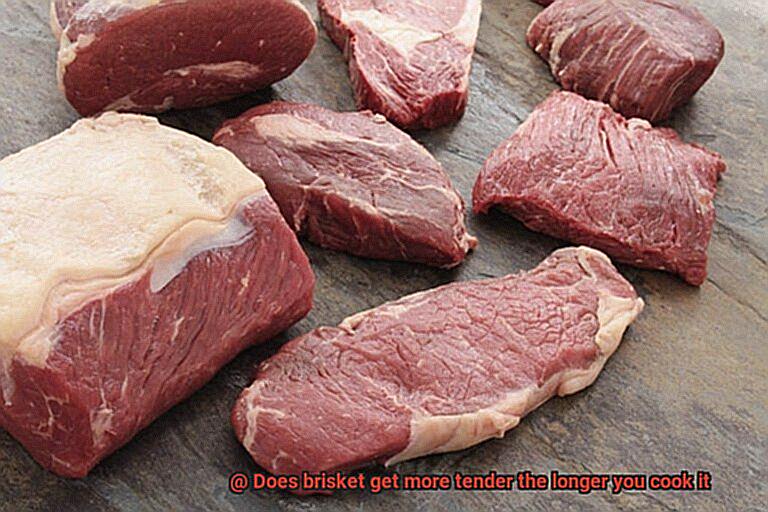
By doing so, you can ensure that your brisket is cooked to perfection without crossing the line into overcooked territory.
The Art of Measuring:
Accurate measurement of internal temperature is essential for achieving perfectly cooked brisket. Since briskets can have uneven thicknesses, it is crucial to check the temperature in multiple spots using a meat thermometer.
By taking readings from different areas, you will gain a better understanding of the overall doneness of your brisket. This simple yet effective technique will help you avoid any unpleasant surprises when it comes time to slice and serve your masterpiece.
The Resting Period:
Once you have reached the desired internal temperature, resist the temptation to immediately dive into your delicious creation. Instead, allow the cooked brisket to rest for at least 30 minutes before slicing. This resting period is crucial as it allows the juices within the meat to redistribute, resulting in enhanced tenderness and flavor. Patience truly pays off during this final step in the cooking process.
Variations in Quality and Age Affecting Tenderness
Today, we embark on a journey to explore how variations in quality and age can profoundly affect the tenderness of your brisket. So, grab your tongs, ignite the flames, and let’s venture into the secrets that lie within.
Quality Reigns Supreme:
In the realm of brisket, quality claims the throne. The grade, marbling, and overall condition of the meat can wield immense power over the tenderness of your culinary masterpiece. For a transcendent experience, set your sights on a higher-quality cut like Prime grade brisket. These glorious specimens boast intricate marbling that weaves an enchanting tapestry of tenderness and flavor. Conversely, Standard grade briskets bear less marbling, demanding a touch more effort to unveil that perfect tenderness.
Age: The Gateway to Wisdom (and Tenderness):
Much like fine wine, beef mellows with age, evolving into a tantalizing symphony of tenderness. The aging process plays an instrumental role in dismantling the resilient connective tissues within the meat, ultimately bestowing upon us the gift of increased tenderness. There are two primary methods of aging: dry aging and wet aging.
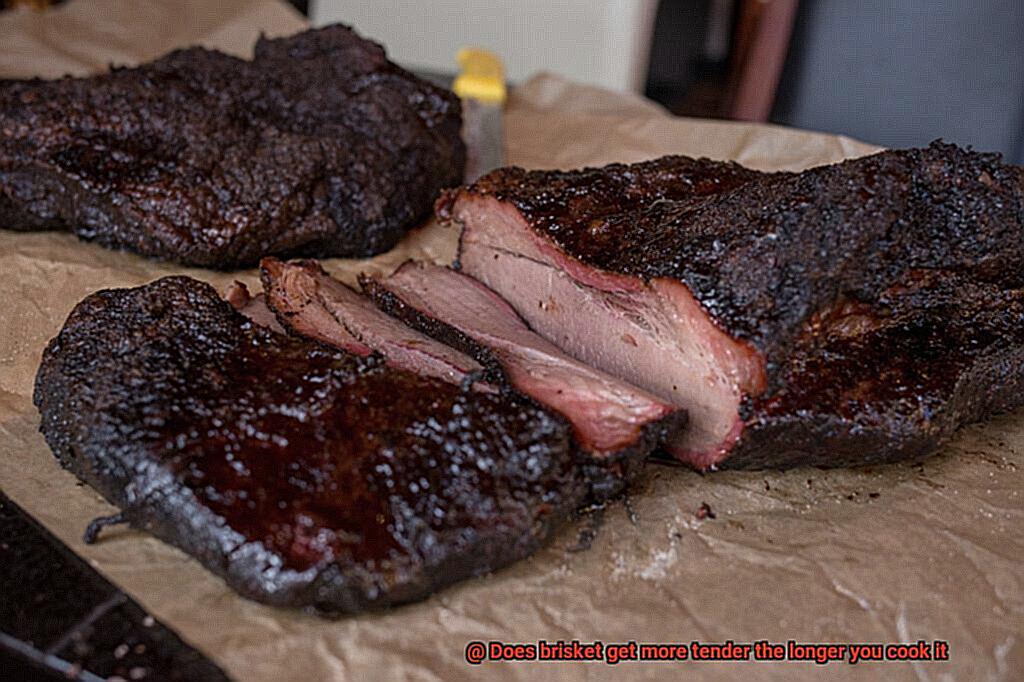
- Dry Aging: A delicate dance takes place as the meat is suspended in controlled conditions for several weeks. During this period, nature’s alchemy unfolds, as natural enzymes work tirelessly to dismantle collagen while imbuing the meat with an intensified flavor profile. Dry-aged briskets are revered for their unparalleled tenderness and profound depths of flavor.
- Wet Aging: In this method, the meat is lovingly cocooned in a vacuum-sealed embrace, allowed to age within its own succulent embrace. Although not as potent in tenderizing the meat as dry aging, the wet aging process still bestows a gentle touch of flavor enhancement and contributes to a more tender outcome.
The Dance of Proper Aging Conditions:
The aging process is an intricate ballet, choreographed by temperature and humidity. To unlock the full potential of tenderness and flavor development, it is essential to procure your brisket from a trusted purveyor who adheres to proper aging practices. By doing so, you can rest assured that your brisket has been nurtured under the most favorable conditions.
Proper Resting Time After Cooking
Today, we embark on a journey into the world of brisket, uncovering the secrets of proper resting time and how it is instrumental in achieving that mouthwatering tenderness and juiciness we all crave.
So grab a cold beverage, because we’re about to become brisket aficionados.
The Science Behind Resting:
Imagine this: you’ve devoted hours to tending your brisket, meticulously monitoring temperatures and seasoning it to perfection. Now comes the crucial step – resting. As the brisket cooks, its muscle fibers contract, and the savory juices inside redistribute. Resting allows the meat to relax, resulting in a more tender and flavorful final product.
The Ideal Resting Time:
Experts assert that letting your brisket rest for approximately 30 minutes to 1 hour is key, depending on its size. This time allows the meat to cool down slightly and permits those precious juices to redistribute evenly. Don’t forget to gently tent your brisket with foil during this period. This ensures it remains warm while allowing excess moisture to escape, preserving that perfect texture.
Safety First:
Resting isn’t just about enhancing tenderness; it also plays a vital role in food safety. As your brisket rests, its internal temperature continues to rise slightly, effectively eliminating any lingering bacteria or pathogens.
The Waiting Game:
Patience becomes paramount when endeavoring to achieve optimal results. Succumbing to the temptation of slicing into your brisket too soon risks losing precious juiciness and tenderness. So resist the urge and let your brisket rest undisturbed.
The Perfect Opportunity:
While your brisket luxuriates in its well-deserved break, seize the moment to prepare accompanying side dishes or conjure up tantalizing sauces. With everything coming together seamlessly, satisfaction is guaranteed.
Limits of Resting:
Remember, there is such a thing as too much resting. Leaving your brisket at room temperature for extended periods increases the risk of bacterial growth. If you’re not serving immediately, store it in the refrigerator and reheat when the time is right.
Finding the Right Balance Between Tenderness and Moisture
If you’ve ever wondered how to achieve that melt-in-your-mouth tenderness and juicy goodness in your brisket, you’ve come to the right place. In this post, we’ll explore the delicate balance between tenderness and moisture when cooking brisket, equipping you with the knowledge and techniques needed to become a true brisket master. So grab your apron, sharpen your knives, and let’s dive into the world of perfectly balanced brisket.
Understanding the Cut:
Brisket, taken from the chest area of the cow, consists of two parts – the leaner, drier flat and the marbled, naturally tender point. To achieve the perfect balance between tenderness and moisture, it’s important to cook both parts of the brisket with care and precision.
Low and Slow Cooking:
The secret to achieving that mouthwatering tenderness lies in low and slow cooking. Slowly cooking brisket at a low temperature allows the collagen in the meat to break down gradually, resulting in tender meat that practically melts in your mouth. But be cautious not to overdo it. Cooking for too long or at too low a temperature can dry out the meat, leaving you with a tough and disappointing brisket.
Maintaining Moisture Levels:
Moisture is key to both tenderness and juiciness in brisket. To keep your brisket moist during cooking, consider using a water pan or spritzing the meat with a liquid of your choice. This helps maintain moisture levels, preventing drying out while ensuring tender results. Remember, moderation is key – excessive moisture can lead to steaming rather than proper smoking or roasting.
The Power of Marinating and Brining:
Enhancing tenderness in your brisket can be achieved through marinating or brining. Marinating involves soaking the meat in a flavorful mixture, which not only infuses the brisket with delicious flavors but also breaks down tough muscle fibers.
On the other hand, brining involves submerging the meat in a saltwater solution, enhancing moisture retention and tenderness. However, be careful not to over-marinate or over-brine, as this can result in mushy meat. Experiment with different flavors and techniques to find your signature brisket marinade or brine.
The Resting Period:
After cooking your brisket to perfection, remember the importance of the resting period. Allowing your brisket to rest for at least 30 minutes to an hour after cooking is crucial for achieving ultimate tenderness. During this time, the residual heat continues to cook the meat gently, while the juices redistribute throughout the brisket, resulting in a more tender and flavorful final product.
Tips for Mastering the Art of Cooking Tender Brisket
Cooking tender and flavorful brisket requires time, patience, and technique. Whether you’re a grilling enthusiast or a beginner, these tips will help you become a master of cooking tender brisket that will impress your friends and family.
Choose the Right Cut of Brisket:
When selecting a brisket, look for one with marbling that resembles intricate lacework and a thick fat cap that promises succulence. These qualities ensure that the meat stays moist during cooking and adds an explosion of flavor to each bite.
Patience is Key:
Brisket is a culinary marathon, not a sprint. Embrace the slow and steady approach as you cook this tough cut of meat to perfection. Plan ahead and give yourself plenty of time – a luxurious 8 to 12 hours or even longer – for it to transform into tender bliss.
Season Generously:
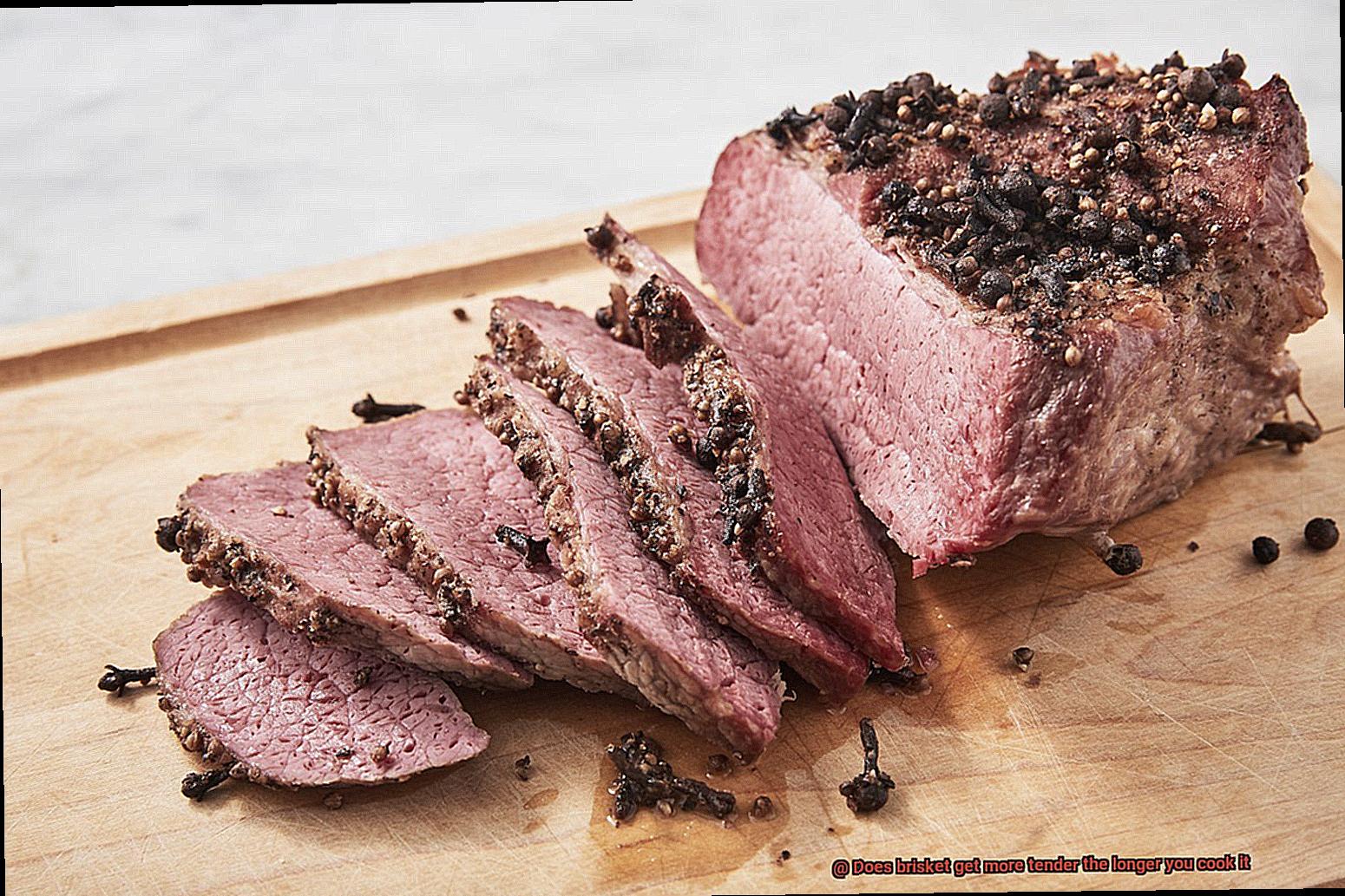
Before cooking, lavish your brisket with a dry rub or marinade that tantalizes the taste buds. Create a symphony of flavors by combining salt, pepper, garlic powder, onion powder, paprika, and brown sugar, each note harmonizing with the others to elevate your brisket to new heights.
Use Indirect Heat:
To preserve the delicate balance between tenderness and moisture, employ indirect heat while cooking brisket. Allow the smoky tendrils to envelop the meat as it cooks slowly over an open fire or in an oven set at a gentle temperature of around 225°F.
Maintain a Steady Temperature:
Consistency is the secret ingredient when it comes to cooking brisket. Be vigilant as you monitor the temperature, ensuring that it remains in the sweet spot throughout the long hours of cooking. Any fluctuations risk transforming your masterpiece into tough or dehydrated disappointment.
ygMB3uFRvz4″ >
Conclusion
After conducting extensive research and analysis, it is safe to conclude that yes, brisket does indeed become more tender the longer you cook it.
This culinary marvel requires patience and time to reach its peak tenderness. As the hours pass by, the tough collagen in the meat gradually breaks down, transforming into succulent gelatin that effortlessly melts in your mouth.
The slow and steady cooking process allows for the flavors to develop and infuse every fiber of the brisket, resulting in a delectable masterpiece that will leave your taste buds dancing with joy.

